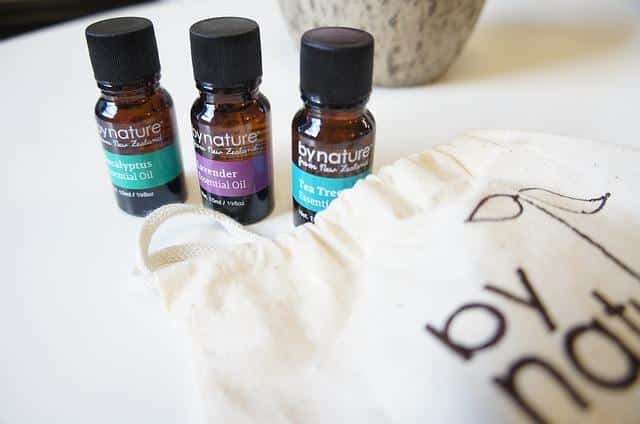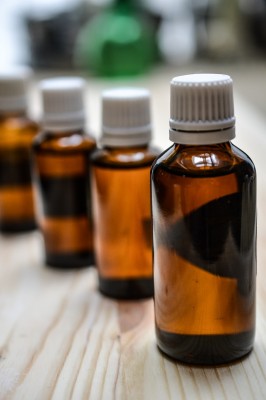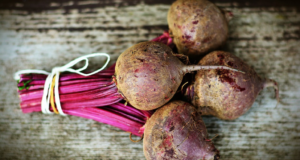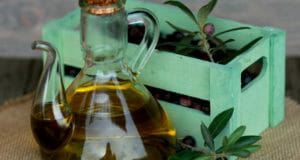When I first became interested in essential oils, I had plenty of questions. I wondered, “How do I know that the essential oils are 100 percent pure, as advertised?” And: “How much should I pay for 100 percent pure essential oils?”
Now that I have more experience with buying and using essential oils, I know what to look for before purchasing essential oils and how to determine their purity after I receive them. Here’s what I’ve learned:
1. Look at multiple retailers and thoroughly check out each of their websites.
Don’t just buy the first essential oils that you come across. Take the time to look at different companies and producers that sell the oils. Do this by carefully looking over their websites and how they present the essential oils. Here are some tips to help with online shopping for essential oils:
Does the seller’s website provide easy access to customer service by offering a phone number?
This is important because it shows that the seller cares about their product and you as their customer. They should be there to answer any questions about their products and to address any potential problems with orders.
Does each essential oil have its own page or section where it clearly lists ingredients and offers information about the oil?
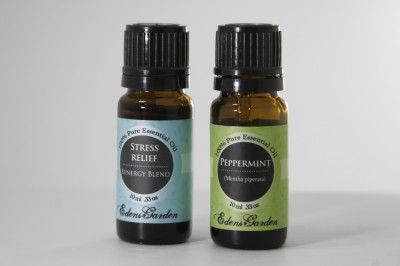 I find this both important and helpful. All health products should have the ingredients listed both on the website and on the product itself. Also, for 100 percent essential oils, make sure the ingredients include only the oil and no other ingredients. If other ingredients are listed, then the oil is not 100 percent pure, and fillers have been added. Furthermore, look for the scientific name of the oil. For example, for peppermint essential oil, the ingredient label should say: 100 percent pure mentha piperita (peppermint oil). If it says anything else, the chances are high that it is not 100 percent pure.
I find this both important and helpful. All health products should have the ingredients listed both on the website and on the product itself. Also, for 100 percent essential oils, make sure the ingredients include only the oil and no other ingredients. If other ingredients are listed, then the oil is not 100 percent pure, and fillers have been added. Furthermore, look for the scientific name of the oil. For example, for peppermint essential oil, the ingredient label should say: 100 percent pure mentha piperita (peppermint oil). If it says anything else, the chances are high that it is not 100 percent pure.
Learn How To Make Powerful Herbal Medicines, Right in Your Kitchen!
When a seller openly offers information about the essential oil such as how it is cultivated, distilled, where it is manufactured, and how it should smell, it shows that they truly want to inform you about the product that they are offering.
Look for seller sites that offer blogs and DIY ideas on how to use the essential oils, too. Remember, the more detailed a seller’s site is, the more it shows their dedication to the product and to you as a customer.
Does the seller offer confirmed customer reviews and is there an option to leave a review yourself?
Reviews are everything these days and without them, I might not be inclined to buy a new product. Just by reading other customer’s reviews, you can determine if the essential oil is 100 percent pure and if the customer is happy with their purchase.
2. Know how much 100 percent pure essential oils should cost!
Beware of cheap essential oils. For the most part, 100 percent pure oils can be costly, so if it sounds too good to be true, then it probably is. Here are some tips for beginners to help learn how much each oil should cost.
Check out multiple sellers and compare
By comparing prices for essential oils from different sellers, and by following the above-listed tips for finding reputable sellers, you can learn about what the price range should be for each essential oil.
You will find that certain essential oils are extremely expensive and always will be in a pure form. For example, rose, jasmine and helichrysum, among others, are more expensive. The reasons for the extra cost can vary, but is most likely due to an oil’s source plant being rare, hard to grow, or that it just takes a significant amount of the plant to extract a small amount of oil.
Other essential oils will be mid-range in price, such as neroli, and some will be a little cheaper (lavender, for example) because they grow in such abundance and distracting the oil is an easier process.
Some reputable sellers will sell pre-blended versions of the more expensive oils. This is OK as long as the ingredients are listed as blended. Usually, the oil will be blended with a carrier oil, such as sweet almond oil. This is to help keep the oils affordable for customers.
3. After finding a reputable seller, how do you know which essential oils to start out with?
This is a common question, so I wanted to throw in that some sellers do sell starter kits. These kits will contain smaller bottles of popular oils so that you can try them out and get a feel for the ones that you like. This can help out with costs for a beginner trying to start a collection of essential oils.
How To Test Your Oils for Purity After You Purchase Them
1. There should not be any odors such as alcohol.
The oils should never have the smell of alcohol or any other chemical. Some companies will add alcohol as a cheap diluting agent and then try to pass it off as pure.
2. Pure essential oils should not be overly oily or greasy.
Though some oils are thicker than others in substance, essential oils are not exactly an oil. They are called this for lack of a better term, because they do not mix well with water. Test a drop by rubbing it between your fingertips. If it feels too greasy and does not absorb quickly, a carrier oil like olive oil might have been added to it. To further test it, here are several ideas:
3. The paper test
Drop a drop of the essential oil onto a piece of white printer paper. Let it dry. If it leaves a ring of residue behind, the oil is not pure. Pure essential oils will completely evaporate. (Since some oils have a color to them, the color might stain the paper, but there should not be a ring of residue after the oil evaporates.
4. The water test
Drop a few drops into your diffuser or a small container of water. The oil should not mix with the water, but instead float on top of the water until it fully evaporates. If it mixes with the water or makes the water a cloudy white color, the oil is not in pure form.
By starting out with these tips, you can be well on your way to becoming an experienced essential oil buyer and user!
What advice would you add on determining if an essential oil is pure? Share your tips in the section below:
 Off The Grid News Better Ideas For Off The Grid Living
Off The Grid News Better Ideas For Off The Grid Living

